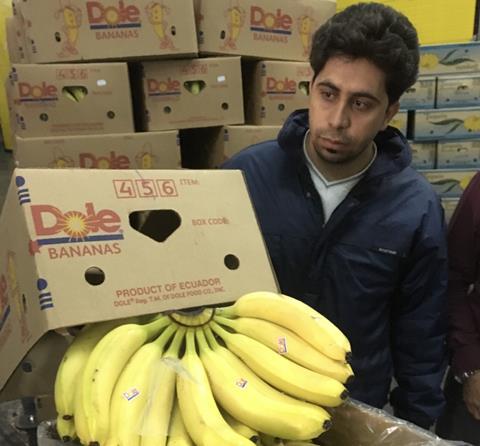Iran is increasingly turning to Indian bananas, as multiple factors reduce the volumes coming from the Philippines and Ecuador and as sanctions continue to limit importers’ options
The widespread protests in Iran following the death of Mahsa Amini in police custody, which quickly developed into strikes, including in the transportation sector, have added to the woes of fruit traders already reeling from the impact of crippling sanctions on the country’s economy and businesses.
Fruit consumption declined dramatically, according to Alireza Emami, CEO of Iranian trader Zarrin Group, as celebrations and gatherings decreased and some stopped visiting restaurants or going to concerts. “We experienced the direct effect of these events on Iran’s fruit market,” he said.
In the ensuing chaos, the Iranian currency quickly lost approximately 30 per cent of its value against the US dollar, with forecasts anticipating further devaluation in the coming months.
“The outcome of this incident is harsh inflation and a decrease in the purchasing power of people, even for food, including fruit,” said Emami. “This is on top of sanctions, which had already put more than enough economic pressure on people.”

Due to rising costs of services and inputs like labour and chemicals, all fresh produce businesses in Iran have been affected, whether traders of locally produced fruit or imports.
“The banana business faced losses,” said Emami. “But Zarrin remains firm and has kept up its relationships with suppliers during these difficult conditions, especially in Ecuador.”
Sanctions limit options
Only tropical fruits are currently allowed to be imported into Iran, including bananas, pineapples, coconuts and mangoes, with bananas coming from the Philippines, Ecuador and India.
Due to sanctions, bananas are shipped almost biweekly from the Philippines to Iran but only by chartered vessel from multinational banana companies, according to Emami.
“The bananas arrive in Bushehr Port and are allocated to banana importers including Zarrin,” he said. “Shipping bananas from the Philippines by international container lines is still not possible.”

Zarrin was the largest direct importer of Ecuadorean bananas to Iran, but the reimposition of sanctions in 2018 left only one choice: to import indirectly via Mersin in Turkey.
“Containers have to be shipped from Ecuador to Mersin, then loaded onto a reefer truck headed to Bazargan on Iran’s northwestern border,” said Emami. “Regretfully, on one side there are restrictions and high freight rates from the shipping lines, and on the other there are rising costs of about US$3 per box when imported via Mersin. This has caused very tough conditions and shrunk our scope of activities.”
Other factors affecting the production side in Ecuador have created additional challenges. These include the impact of Covid-19 in early 2022, the war in Ukraine, strikes in Ecuador, storms in Costa Rica, Honduras and Guatemala, which have increased demand for Ecuadorean bananas, and the downward effect of La Niña on temperatures and production in the country.
According to Emami, the price for Ecuadorean bananas increased by 100 per cent between the first and second halves of 2022. “The average fruit price in the first half was about US$4.70, rising to US$9.80 in the second half of the year,” he said. “The highest was in week 44 at around US$15, the lowest in week 15 at less than US$3.”
As a result, banana imports from India are on the rise, an origin with multiple advantages for Iran, including availability of Iranian and Indian container shipping lines, shorter transit times, lower freight rates and a lower cost price.
“Zarrin has been the main banana importer from India in the past years,” said Emami. “Imports have not been unaffected by recent events, but due to various reasons including the possibility of money transactions between India and Iran even during sanctions, volumes are growing. The banana quality is lower, but the price is better while consumer purchasing power is so low.”



